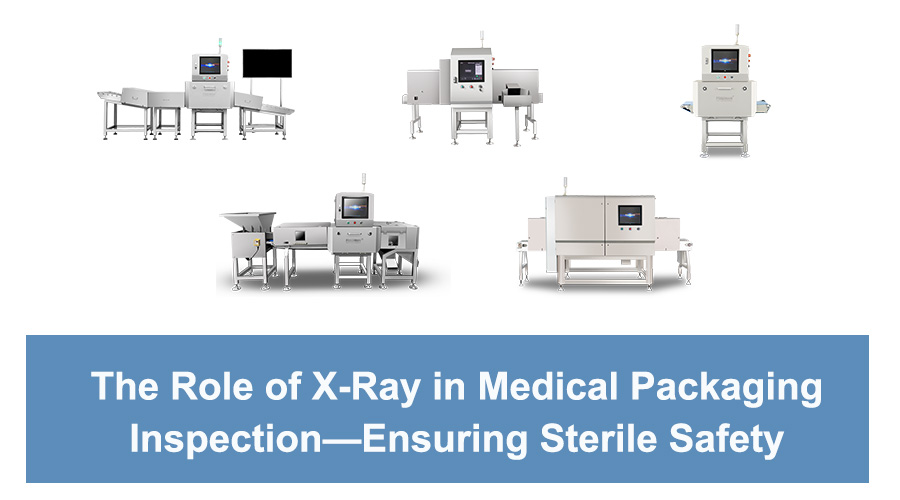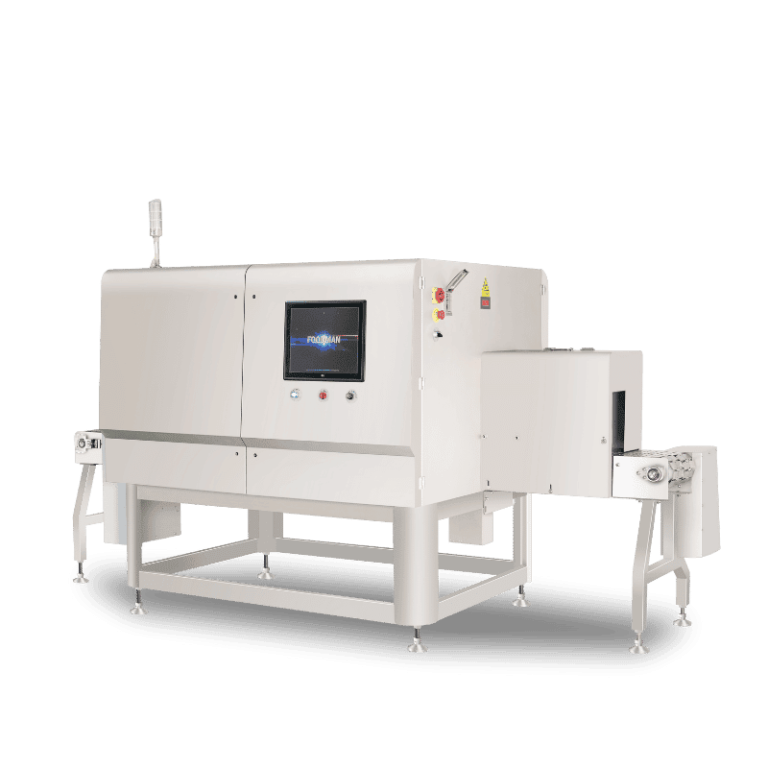Introduction: Why Sterility in Medical Packaging Matters
Ensuring sterility in medical packaging is non-negotiable when it comes to protecting patient health and meeting stringent industry standards. With increasing complexity in pharmaceutical and healthcare products, manufacturers are turning to X-Ray inspection, supported by advanced X-Ray inspection equipment and automated X-Ray inspection machines, to guarantee the highest level of quality control. These systems enable real-time, non-destructive testing that helps identify defects such as micro-leaks, foreign objects, and seal failures—issues that could otherwise compromise sterility and patient safety.
Importance of Sterile Integrity for Patient Safety
Sterile packaging acts as the first line of defense against contamination in medical products. Whether it’s a syringe, vial, or surgical kit, maintaining a contaminant-free environment until the moment of use is essential. A compromised seal or unnoticed damage can allow bacteria or other pathogens to infiltrate, putting patients at risk of infections or complications during treatment.
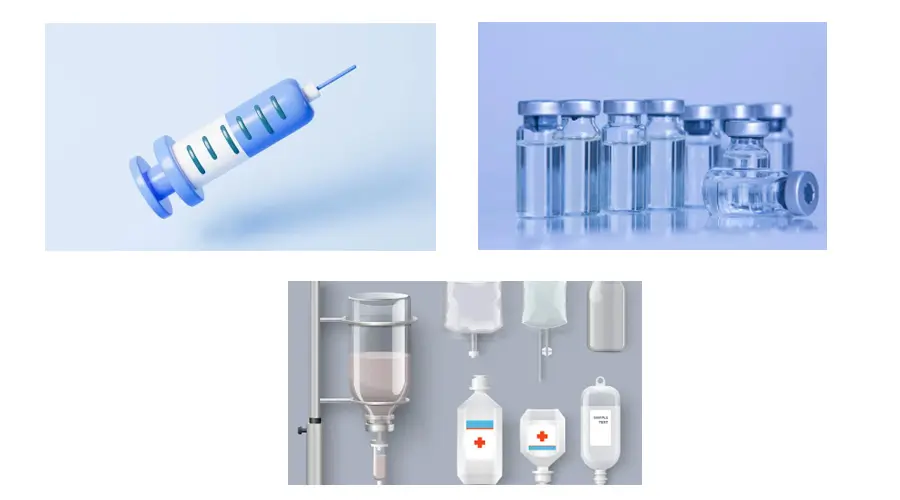
Risks of Compromised Packaging: Contamination, Infection, Product Recalls
Even minor packaging defects can have serious consequences. A single micro-tear or puncture could lead to contamination that remains undetected until it affects the end user. These lapses often result in expensive product recalls, legal liabilities, and damage to brand credibility. In worst-case scenarios, they may lead to serious health issues or regulatory action. Traditional inspection methods such as manual checking or dye testing are often inadequate in catching such subtle defects.
Increasing Demand for Non-destructive, Reliable Inspection Methods
As regulatory standards like FDA 21 CFR Part 11, ISO 11607, and EU MDR become increasingly rigorous, there’s a growing demand for more precise, non-destructive inspection solutions. X-Ray inspection systems meet these needs by providing deep insights into package integrity without damaging the product. Their ability to verify fill levels, detect trapped air, and identify foreign objects makes them indispensable for pharmaceutical and medical device manufacturers looking to ensure safety, reduce waste, and stay compliant.
Challenges in Medical Packaging Inspection
Ensuring sterile safety throughout the medical packaging process is no small feat. With the diversity of packaging formats and growing complexity of healthcare products, manufacturers face numerous challenges that demand highly accurate and reliable medical inspection technologies. Traditional methods often fall short, which is why X-Ray inspection, powered by advanced X-Ray inspection equipment and intelligent X-Ray inspection machines, is becoming the gold standard for safeguarding product integrity.
Common Packaging Formats: Blister Packs, Pouches, Vials, Ampoules
Modern medical packaging comes in a wide range of formats, each with its own inspection challenges. Blister packs, for example, must be checked for seal integrity and content completeness; pouches often require internal analysis to detect trapped particles; vials and ampoules can hide contamination or misfills that are not visible to the naked eye. These complexities increase the risk of undetected defects that could compromise sterile safety, unless backed by precise and automated X-Ray inspection machines designed specifically for medical inspection tasks.
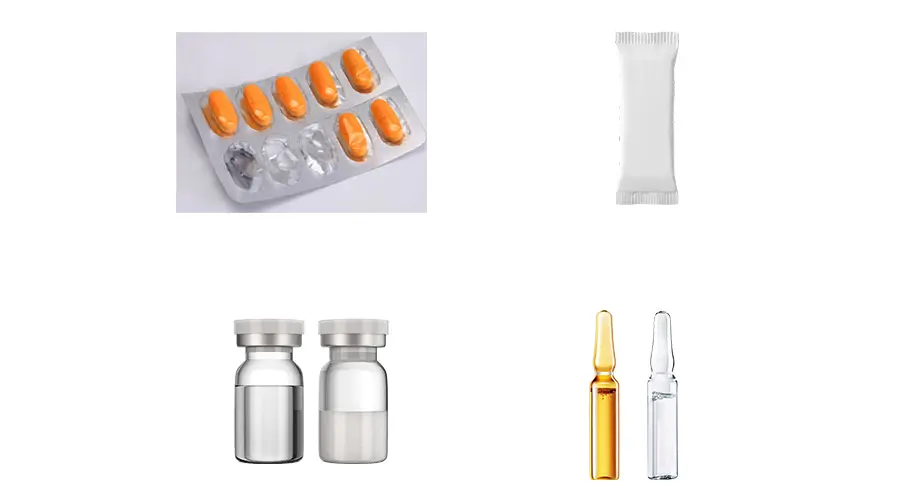
Potential Defects: Micro-Leaks, Broken Seals, Foreign Bodies, Trapped Air
Even the smallest defects can render a product unsafe for medical use. Micro-leaks or broken seals may allow bacterial ingress, undermining sterility. Foreign bodies—such as glass shards, metal fragments, or rubber particles—can contaminate the product, while trapped air in sealed packs may point to seal integrity issues. These defects are notoriously difficult to detect manually. This is where X-Ray inspection equipment excels, using high-resolution imaging to identify anomalies within the packaging that could affect sterile safety.
Limitations of Traditional Inspection Methods (Manual Checks, Pressure Tests, Etc.)
Traditional medical inspection methods such as manual visual checks, pressure decay tests, or dye penetration are often time-consuming, inconsistent, and unreliable when it comes to detecting subtle or internal defects. These methods also pose risks of product damage during testing. In contrast, X-Ray inspection offers non-destructive, real-time analysis with far greater accuracy and consistency. By integrating automated X-Ray inspection machines into the production line, manufacturers can significantly reduce false rejects, improve compliance, and ensure every product meets strict sterility and safety standards.
How X-Ray Inspection Ensures Sterile Integrity
In the medical and pharmaceutical industries, sterile integrity is non-negotiable. Even the slightest compromise in packaging can lead to contamination, patient risk, and costly recalls. X-Ray inspection systems provide a powerful, non-destructive solution for maintaining the highest quality and safety standards. With advanced X-Ray inspection equipment, manufacturers can identify issues in real time and ensure that every product leaving the line is safe, compliant, and sterile.
Non-Invasive, Real-Time Inspection for Sealed Medical Packaging
One of the key benefits of X-Ray inspection is its ability to analyze sealed packages without opening or damaging them. Whether it’s blister packs, pouches, or ampoules, X-Ray inspection machines deliver non-invasive, real-time insights into the internal structure of the packaging. This allows for continuous medical inspection on high-speed production lines while maintaining product sterility and production efficiency.
Detecting Foreign Objects (Glass, Metal, Rubber, Plastic)
Contaminants such as glass shards, metal fragments, rubber pieces, or plastic particles can accidentally enter the packaging process. These foreign bodies are often invisible to the naked eye, particularly when embedded within sealed medical containers. Using high-resolution sensors and multi-energy detection, X-Ray inspection equipment can accurately detect a wide range of materials regardless of their size or position inside the package, greatly enhancing sterile safety.
Verifying Seal Quality, Proper Closure, and Internal Consistency
Inconsistent sealing, misaligned caps, or partially closed pouches can all jeopardize the sterility of medical products. X-Ray inspection systems are capable of identifying seal defects, air pockets, and irregular product placements that indicate faulty packaging. By using intelligent algorithms and multi-angle imaging, modern X-Ray inspection machines can automatically assess seal quality, verify proper closure, and ensure the internal layout of the package is consistent and secure.
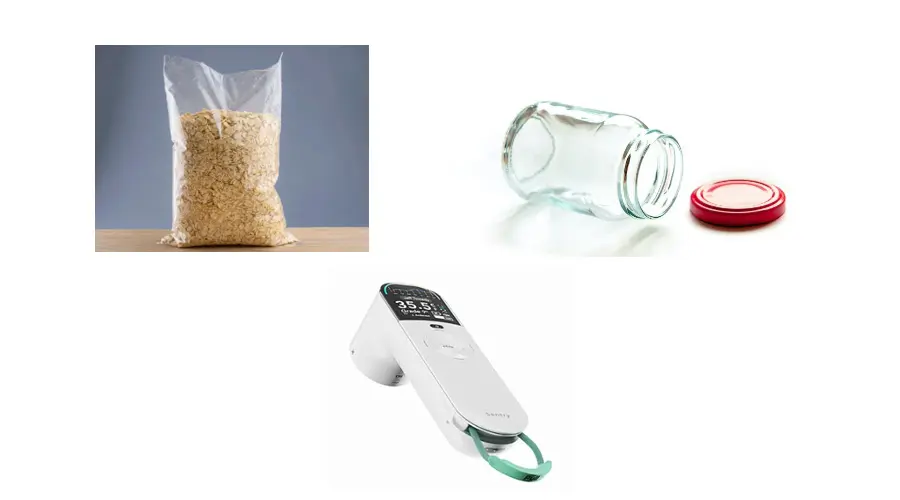
Ensuring Fill Level and Component Presence in Complex Packages (E.G., Surgical Kits)
For complex items like surgical kits or combination medical devices, it’s crucial to ensure every component is present and filled to the correct level. Overfills or underfills can affect dosage accuracy, while missing tools or parts may pose serious risks in medical settings. X-Ray inspection equipment can precisely measure fill levels, detect missing components, and verify that each item is in its correct place within the packaging. This capability not only maintains sterile safety, but also ensures complete functionality of the final product.
Meeting Regulatory and Sterilization Standards
Compliance with Global Health Standards (FDA, ISO 11607, GMP)
In the highly regulated world of medical and pharmaceutical manufacturing, compliance with international standards is a core requirement. Modern X-Ray inspection systems are designed to align with key global health regulations such as FDA 21 CFR Part 11, ISO 11607 for sterile barrier systems, and GMP (Good Manufacturing Practices). By incorporating X-Ray inspection equipment into their quality control workflows, manufacturers can meet stringent requirements while ensuring sterile safety in every packaged unit.
Validatable Inspection Processes (IQ/OQ/PQ)
Pharmaceutical and medical device production lines must undergo thorough qualification procedures — Installation Qualification (IQ), Operational Qualification (OQ), and Performance Qualification (PQ). Leading X-Ray inspection machines support fully validatable processes, allowing seamless integration into validated environments. This ensures not only regulatory compliance but also peace of mind for manufacturers concerned with quality assurance.
Secure Data Logging and Audit Trail for Traceability
Traceability is critical for product recalls, audits, and quality verification. Advanced X-Ray inspection equipment includes secure, tamper-proof data logging systems, maintaining comprehensive audit trails for each inspected item. These features help companies stay ready for internal and external audits while also supporting digital documentation in accordance with FDA Part 11 and GMP guidelines.
Key Features of Advanced X-Ray Systems
High-Resolution Imaging for Detecting Micro-Defects
Today’s X-Ray inspection machines use high-resolution sensors to capture even the smallest anomalies within sealed packages. This level of detail is crucial when identifying micro-defects such as fine cracks, hairline leaks, or minuscule foreign bodies that traditional inspection methods might miss. These systems ensure no defect slips through undetected.
AI-Enhanced Recognition for Seal and Fill Anomalies
With the integration of AI-powered algorithms, X-Ray inspection systems can automatically detect irregularities in seal lines, underfills, overfills, or misplaced items. This deep-learning capability allows the system to become smarter over time, learning from previous data to improve inspection accuracy and reduce false positives—making quality control more reliable and efficient.

Automatic Reject Systems to Separate Non-compliant Packaging
Efficiency is just as important as accuracy. X-Ray inspection equipment can be paired with automatic rejection systems that immediately remove non-compliant items from the production line. This allows for real-time action without interrupting the overall manufacturing process, thus maintaining throughput while ensuring only sterile, intact products continue downstream.
Adaptability for Different Package Sizes and Materials
From small blister packs to large medical trays or surgical kits, X-Ray inspection machines are designed to accommodate a wide range of packaging types and materials. Whether inspecting rigid plastics, aluminum seals, or flexible film packaging, these systems adapt easily to meet changing product and packaging needs—making them ideal for diverse pharmaceutical and healthcare production environments.
Case Applications
Example 1: X-Ray Inspecting Sterile Surgical Kits
Sterile surgical kits often contain a variety of tools and consumables—including scalpels, gauze, syringes, and forceps—each of which must be present, correctly positioned, and fully sealed to ensure patient safety. Traditional inspection methods such as visual checks or weight measurements often fall short in confirming both internal integrity and sterility.
By implementing X-Ray inspection equipment, manufacturers can conduct non-destructive, real-time analysis of each surgical kit. The X-Ray inspection machines accurately verify the presence of all required components, detect any misplaced or broken items, and confirm the integrity of the packaging seal without opening the package. This not only ensures sterile safety, but also drastically reduces the need for manual labor, improving overall inspection efficiency and reliability.
Example 2: Detecting Seal Failure in Blister-Packaged Syringes
Blister packaging is widely used for single-use medical devices like syringes, but even tiny seal failures or trapped air bubbles can lead to compromised sterility. Such defects are hard to detect using traditional pressure testing or manual inspection, and may result in product recalls if left unchecked.
Using X-Ray inspection systems, manufacturers can inspect each blister pack without damaging the packaging, instantly detecting seal irregularities, foreign objects, or trapped air pockets. The X-Ray inspection equipment provides high-resolution imaging capable of identifying micro-leaks and seal defects that might otherwise go unnoticed. These insights allow for swift corrective actions on the production line, ensuring only sterile and safe syringes reach the market.
Results: Reduced Contamination Risk, Improved Compliance, Higher Production Reliability
In both cases, adopting X-Ray inspection technology has led to measurable improvements in quality control outcomes:
- Reduced contamination risks by ensuring airtight packaging and complete component verification
- Improved regulatory compliance with automated inspection records and traceability features
- Higher production reliability, thanks to fewer product rejects, less manual rework, and consistent detection of non-conformities
Manufacturers that integrate X-Ray inspection machines into their sterile product lines not only achieve higher standards of safety but also benefit from long-term cost savings, increased consumer trust, and smoother audit experiences.
Benefits to Manufacturers and End-Users
Reduced Manual Inspection Labor
Traditional inspection methods in medical packaging often rely on human operators to identify packaging defects, verify component presence, or confirm seal integrity. This process is not only time-consuming and prone to error but also limits scalability. By incorporating X-Ray inspection equipment, manufacturers can significantly reduce dependency on manual labor. These systems automate the inspection process, delivering consistent, real-time analysis at high speeds—freeing up human resources for higher-value tasks and minimizing fatigue-related mistakes.
Lower Product Loss and Waste
Manual inspections or pressure tests can often result in unnecessary rejection of products that are actually compliant, or worse—failure to detect defective units. X-Ray inspection machines provide precise, non-destructive assessment of every unit, ensuring that only genuinely faulty products are removed from the line. This accuracy minimizes false rejects and prevents costly production waste, contributing to leaner and more sustainable manufacturing practices.
Enhanced Patient Safety and Brand Reputation
In the healthcare industry, patient safety is paramount—and packaging defects can lead to serious consequences, from contamination to ineffective treatment delivery. With X-Ray inspection systems, manufacturers can guarantee the sterility, integrity, and completeness of every packaged product. Detecting foreign bodies, seal breaches, or missing components with high-resolution imaging enhances product safety and protects patients from harm. In turn, this commitment to quality reinforces brand credibility, helping manufacturers build trust with healthcare providers, regulators, and end users.
Increased Throughput and Packaging Efficiency
Speed and efficiency are critical in pharmaceutical and medical device manufacturing. X-Ray inspection equipment is designed to integrate seamlessly into high-speed production lines without compromising accuracy. Its automated defect recognition and real-time rejection capabilities allow for uninterrupted flow, reducing bottlenecks and enabling manufacturers to meet market demands faster. As a result, production throughput improves, packaging lines operate more efficiently, and customer satisfaction grows.
Conclusion
Recap: How X-Ray Inspection Safeguards Sterile Packaging
Maintaining the sterility and integrity of medical packaging is non-negotiable when patient safety and regulatory compliance are on the line. From detecting micro-defects to verifying seal quality and confirming internal consistency, modern X-Ray inspection machines provide a non-invasive, highly accurate solution to quality control challenges. These systems ensure sterile safety by identifying issues that traditional methods might overlook, reducing the risk of contamination, infection, and costly recalls.
Whether inspecting blister packs, vials, pouches, or surgical kits, X-Ray inspection equipment delivers the precision and real-time performance needed to meet the increasingly stringent standards of today’s healthcare industry.
Upgrade Inspection Systems for Higher Standards and Safer Outcomes
As the industry moves toward smarter, more sustainable manufacturing practices, investing in advanced X-Ray inspection systems is not just a step forward—it’s a leap toward long-term success. Upgrading your current inspection process with intelligent, AI-enhanced X-Ray inspection technology ensures your packaging lines are not only more efficient but also future-ready.
Make the shift today to enhance compliance, protect your brand, and above all, ensure the safety of every product that reaches the hands of patients and healthcare professionals.

